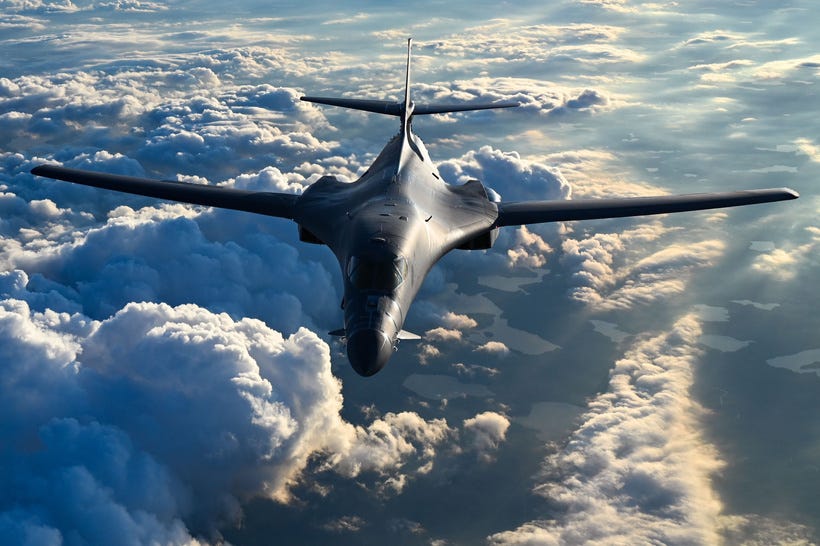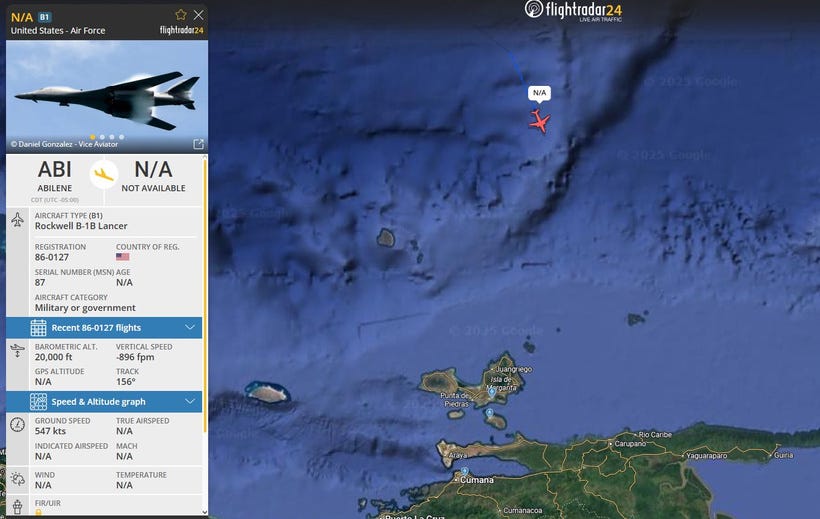U.S. B-1B Bomber Flights Near Venezuela: Trump's Denial and Available Evidence
The aircraft, designated BART21 and BART22, departed from Dyess Air Force Base in Texas and temporarily entered Venezuela’s air defense identification zone.
SOUTH AMERICA — U.S. Air Force B-1B Lancer bombers conducted a patrol over the Caribbean Sea on October 23, coming within approximately 31 miles (50 kilometers) of Venezuela’s coast according to public flight tracking data and media reports.
The aircraft, designated BART21 and BART22, departed from Dyess Air Force Base in Texas and temporarily entered Venezuela’s air defense identification zone.
Venezuelan officials provided no targeted comments on this patrol, while the Venezuelan state-run news agency NAMPA upholds standard monitoring efforts amid regional developments.
President Donald Trump rejected accounts of the bombers’ presence near Venezuela, declaring during a White House discussion, “No, it’s not accurate. No, it’s false, but we’re not happy with Venezuela for a lot of reasons,” with video footage confirming his remarks.
United Nations and regional reviews point to possible implications for stability, though no immediate incidents or breaches occurred. The patrol fits within U.S. strategies to address narcotics trafficking, lacking any official labels as practice for strikes.
Flight tracking resources, such as Flightradar24, recorded the trajectory of the B-1B Lancers, verifying their closeness to Venezuela’s coastline at approximately 31 miles (50 kilometers).
The aircraft turned off transponders during segments of the patrol, in line with guidelines for certain zones. No U.S. Department of War announcement has described the patrol as a rehearsal for strikes. NAMPA has stressed preparedness in general terms without mentioning this particular patrol.
This patrol succeeds U.S. B-52 activities on October 15 at farther ranges and naval efforts in nearby waters targeting drug trafficking.
President Trump’s response pertained to inquiries about B-1B operations close to Venezuela. Recordings from the October 23 White House session document his rejection, with no formal transcript issued.
The patrol data matches available accounts, showing flights at roughly 24,000 feet and 444 knots. Records show no equivalent patrols on October 23. Discrepancies could result from varying interpretations of patrol purposes, as tracking information indicates a standard patrol. United Nations analyses express concerns about area stability, yet link no direct effects to this patrol.
President Nicolás Maduro noted the placement of 5,000 anti-aircraft missiles for defense, stating, “We have no fewer than 5,000 in key air defense positions to ensure peace,” without clear association to this patrol.




